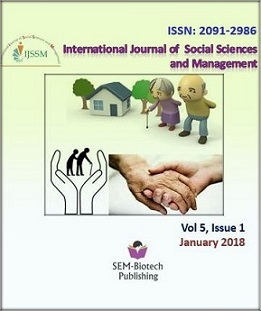Water Institutional Arrangements of FalajAl Daris in the Sultanate of Oman
DOI:
https://doi.org/10.3126/ijssm.v5i1.19006Keywords:
falaj systems, institutional arrangements, water ownerships, water rightsAbstract
Oman, which is located on the Southern East of Arabian Peninsula, classified as holding a semi-arid climate with an average annual rainfall of 100 mm. Therefore, agricultural production in Oman is fully dependent in irrigation. More than one third is supplied by the ancient aflaj (sing. Falaj), which provide 680 x 106 m3 of water per year and irrigate of an area of 26,500 ha. There is two commonly known definition of the aflaj; the locally defined from the classic Arabic root as to divide the water among its shareholders. In addition, the modern technical definition as trenches and tunnels, which are dug in the ground, to convey the accumulated rainfall water table to the irrigated area in the villages. This study explore some of the existing institutional arrangements found within Falajdaris, at the waliyat (city) of Nizwalocated in the Dakhillya governmental, Sultanate of Oman. This study uses mainly face-To-face interviews with local administrative falaj agents to explore and discuss the most operated mechanized of the institutional arrangements. The study concluded that there is strong relationship between FalajDaris institutional arrangements development and physical water variability.
Int. J. Soc. Sc. Manage. Vol. 5, Issue-1: 31-42
Downloads
Downloads
Published
How to Cite
Issue
Section
License
This license enables reusers to distribute, remix, adapt, and build upon the material in any medium or format for noncommercial purposes only, and only so long as attribution is given to the creator.




